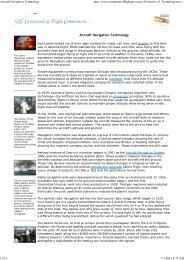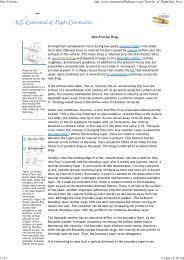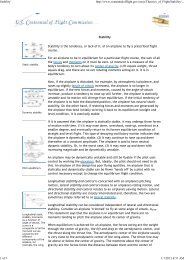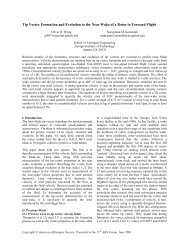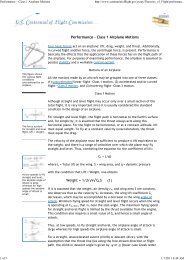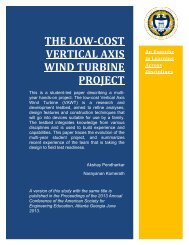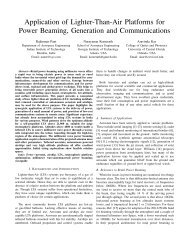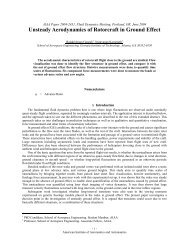Boeing-University Relations - A Review and Prospects for the Future
Boeing-University Relations - A Review and Prospects for the Future
Boeing-University Relations - A Review and Prospects for the Future
You also want an ePaper? Increase the reach of your titles
YUMPU automatically turns print PDFs into web optimized ePapers that Google loves.
current state of affairs in relations between academe <strong>and</strong> industry in general, <strong>and</strong> ourobservations <strong>and</strong> opinions are offered in this context. Despite any differences in opinion, <strong>the</strong>authors remain friends <strong>and</strong> share a mutual passion <strong>for</strong> enhancing engineering education.Industry PerspectiveConcerns about <strong>the</strong> future of engineering education were identified by many in <strong>the</strong> late 1980’s<strong>and</strong> early 1990’s. Many of <strong>the</strong> more pointed concerns expressed at that time related toundergraduate ra<strong>the</strong>r than graduate-level engineering education. These concerns are to somedegree still active <strong>and</strong> include:• Our future supply of engineering talent is threatened. Current engineering educationprograms are failing to attract <strong>and</strong> retain an adequate number of students, especially women<strong>and</strong> minorities. Undergraduate programs still resemble “preparation <strong>for</strong> a Ph.D. program”ra<strong>the</strong>r than “preparation <strong>for</strong> professional practice”. Large majorities of existing facultymembers have little or no significant industry experience, <strong>and</strong> thus have little underst<strong>and</strong>ingof rapidly evolving employer needs.• Engineering education costs a lot <strong>for</strong> what we get. Costs are rising alarmingly, whileundergraduates are not getting full value <strong>for</strong> <strong>the</strong>ir money. Too many are turned off by whatis offered. Employers continue to pay <strong>the</strong> full (often hidden) bill <strong>for</strong> teaching graduateswhat <strong>the</strong>y need to know, but are not taught in school. There is a potential major savings <strong>for</strong>industry in investing early in <strong>the</strong> educational process, ra<strong>the</strong>r than paying <strong>the</strong> bill later.• Major opportunities <strong>for</strong> re<strong>for</strong>m exist but remain to be exploited. Significant advances havebeen made in our knowledge of how people learn <strong>and</strong> develop, while new teaching methods<strong>and</strong> curricular organization have been demonstrated 1, 2 , but have not been widely accepted.Too little has changed in undergraduate engineering education delivery in <strong>the</strong> past 50 years.Much thought has been devoted in both industry <strong>and</strong> academe to <strong>the</strong> future of our enterprise <strong>and</strong><strong>the</strong> technical work<strong>for</strong>ce needed to support it 3 . However, predicting an unknowable, but likelycontinually volatile future presents many problems. In such situations it is sometimes valuable toexamine current events <strong>and</strong> concerns in terms of much longer historical time scales. In this wayone may attempt to discern basic trends <strong>and</strong> durable characteristics that might provide usefulguidance <strong>for</strong> our future, <strong>and</strong> avoid <strong>the</strong> dangers of extrapolating from a possible bubble or troughin any evolutionary process. With this longer-term perspective in h<strong>and</strong>, one <strong>the</strong>n may examinewhat new developments might occur which could produce changes in <strong>the</strong> ‘old way of doingbusiness’. The futurist’s role is thus to examine “what could happen (if wanted <strong>and</strong> nounknowable events intervene)” ra<strong>the</strong>r than attempt to predict <strong>the</strong> future.One successful example of this approach was its use in <strong>the</strong> construction circa 1993-94 of <strong>the</strong><strong>Boeing</strong> list 4,5 of “Desired Attributes of an Engineer” (Fig. 1). The original purpose in creatingthis list was to establish a basis <strong>for</strong> an on-going dialogue with academe at a time when muchlegitimate criticism was leveled at various potential employers <strong>for</strong> a seeming propensity <strong>for</strong>“changing <strong>the</strong>ir minds all <strong>the</strong> time” <strong>and</strong> sending often contradictory messages to schoolsregarding “what industry needs”. Ra<strong>the</strong>r than provide schools with continually changing lists ofProceedings of <strong>the</strong> 2005 American Society <strong>for</strong> Engineering Education Annual Conference & ExpositionCopyright ASEE 2005, American Society <strong>for</strong> Engineering Education.


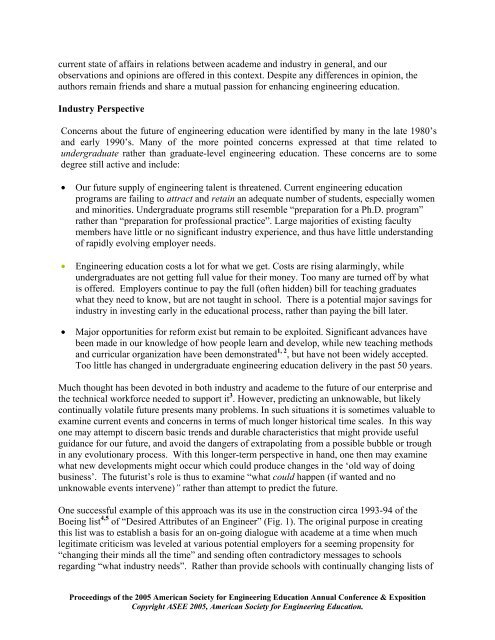
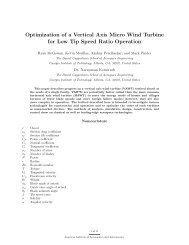
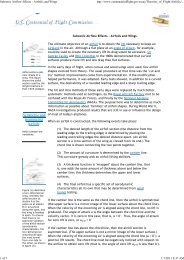

![p density of fluid, kg/m3 [Greek letter rho] V mean velocity of fluid, m ...](https://img.yumpu.com/50595898/1/184x260/p-density-of-fluid-kg-m3-greek-letter-rho-v-mean-velocity-of-fluid-m-.jpg?quality=85)
